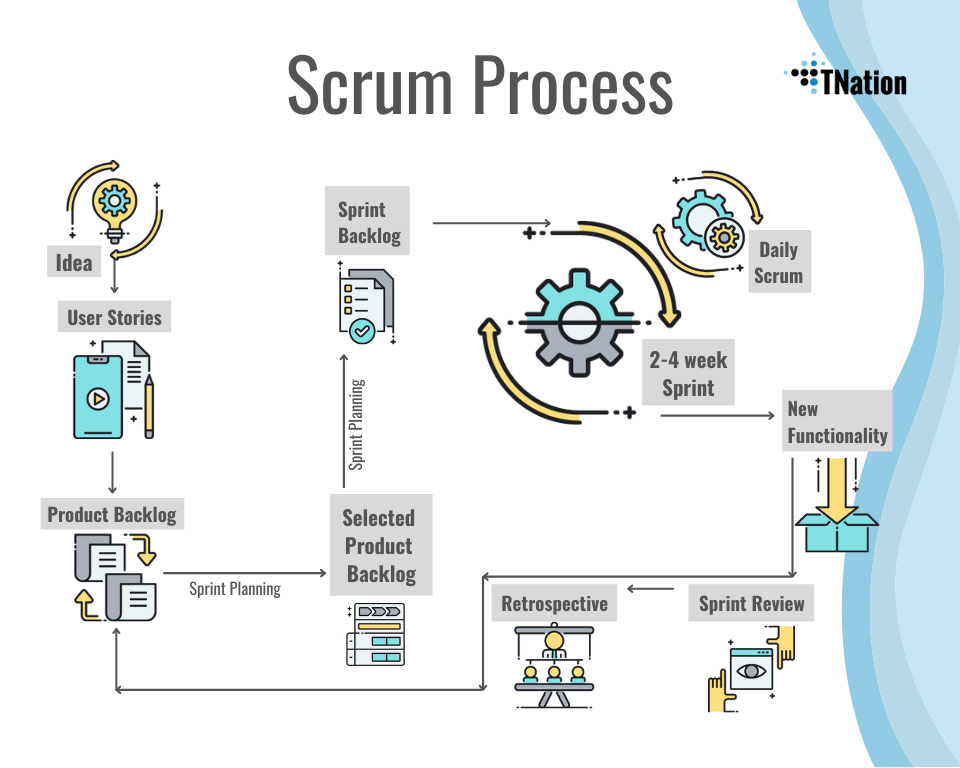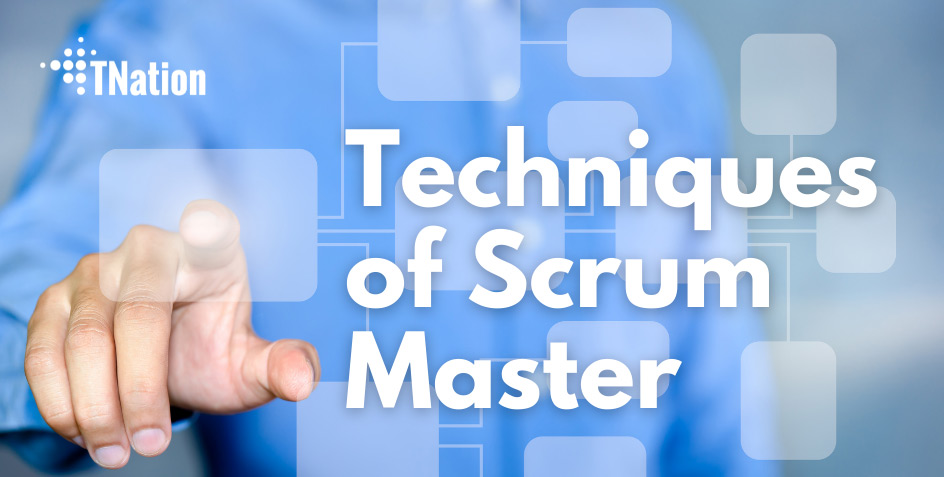Scrum is about delivering value, organising, adapting and reaching goals. To a non-professional, the word may seem bizarre. But, it is not reserved solely for software development, and everyone got familiar with it at some point. Resolution to achieve a particular goal, such as eating healthier meals, defines the practice of Scrum.
For instance, development teams utilise Scrum as a framework to deliver quality computer programs at a much quicker pace and gradually, based on iterative and incremental processes. The result is maintainable software, which maximises the value of the product. Scrum encourages teams to self-organise, inspect, adapt, and learn through experiences while working on complex challenges. It also describes a set of rules and roles that help groups to coordinate and manage their work. Scrum Master is coaching, mentoring and guiding these teams but without actual authority.
On the other hand, the Product Owner (PO) is another role in the Scrum team. Representing the interests of the stakeholders, PO focuses on the business part of the project. That means the PO is responsible for Return on Investment (ROI).
Each software development process has a starting point, much like resolving to start with that healthy meal. First, it begins with a list of objectives and specific requirements. Then, each information is gathered and developed around user personas in a process called User Story Mapping.
It represents a visual tool that allows teams to define, analyse, and understand the customer journey. That tool includes consumers’ expectations, experiences, and improvements. Finally, the Product Owner complements the initial idea with the Stories organised by priority in a Product Backlog.
How Scrum Helps in Real Life
The framework is so universal that some parts of the practice find their purpose even in real life. For example, the very foundation of Scrum is time management and common sense. Likewise, any goal-driven ideas can use the framework as a guide. Apart from software development, it found its way into HR departments and marketing.
Scrum framework relies on small sections and its ability to provide fast delivery of the final product. Splitting any goal into smaller chunks makes it more manageable and achievable. For example, organising a hackathon or code fest for hundreds of people can be a challenging job.
However, with Scrum, event preparation can be divided into smaller tasks. For example, that the organisers ensure a correct number of desks for attendees. Sectioning a project into smaller assignments sounds less intimidating than the endless path to open the event. A good point of beginning is making a list of short and prioritised descriptions of each requirement, called Stories.
The framework relies on attaining the achievable goal within a specific time frame. When the project starts, fixed-length iterations that are considerably short and periodic are Sprints. Much like in athletics, they represent high performance in short intervals. It ranges from two to four weeks, after which the team has time for feedback and retrospectives.
Each Sprint is a story of its own, and it is similar to setting a short term goal. The purpose of these brief Sprints is to deliver genuine value for stakeholders and customers. Moreover, the risk exposure is lesser with an iterative approach. If the team reaches goals within these Sprints, then the event will open without any setbacks. Sprints allow teams to review their work and improve it as necessary. Revisions happen either during daily stand-ups or at a retrospective meeting, enabling event organisers to inspect the progress and adapt quickly.
Benefits – Short Time, High Efficiency, Quality Results
Scrum operates as a feedback-driven empirical process control framework, upheld by the three fundamental pillars of transparency, inspection, and adaptation. It stands as the most widely adopted framework within the software industry. Among the numerous benefits of Scrum is its remarkable ability to quickly adapt to changes in software features and functionalities. This flexibility allows teams to respond promptly to evolving requirements and emerging challenges, ensuring that the development process remains aligned with client needs and market trends. This adaptability not only facilitates more efficient and effective project management but also enhances the relevance and quality of the final software product.
Stakeholders always have high expectations when it comes to the time and quality of the product. Luckily the Sprint Review allows inspection of each Sprint’s outcome. It means that the Scrum Team presents their work to stakeholders, discusses the progress toward the Product Goal, and determines future adaptations.
The entire Scrum Team maintains a high level of communication and regularly verifies the alignment of the software with stakeholder expectations. Scrum methodology encourages open discussions about the tasks being undertaken and the challenges encountered. This constant flow of feedback is invaluable as it allows the team to plan effectively, prioritize tasks, adapt strategies, and modify requirements as necessary. Consequently, one of the key benefits of Scrum is its contribution to ensuring the quality of the solution. By facilitating ongoing communication and responsiveness to change, Scrum helps ensure that the final product not only meets but often exceeds the stakeholders’ requirements.
Being the first on the market and quickly adapting to market demands are essential factors of success. At the same time, while businesses are engrossed in developing the perfect product, tremendous improvement opportunities are often missed. That is where Agile methodology and Scrum framework help reach the final goal. By leveraging their powers, releasing software on the market provides opportunities to receive some valuable feedback. These early feedbacks can help develop enhancements over time.
Scrum is typical in software development, but its structure is also achievable in different pursuits. The framework has its roles, events, artefacts, rules, and by removing any part of it, we can no longer call it Scrum. Of course, many Agile methodology advocates would disagree. However, we can safely say that the practice has its benefits and provides an effortless way to achieve results. If you are interested in more readings about scrum, wikipedia is a good start.
TNation is a software development outsourcing company, and our teams utilise the framework for Project Management.


